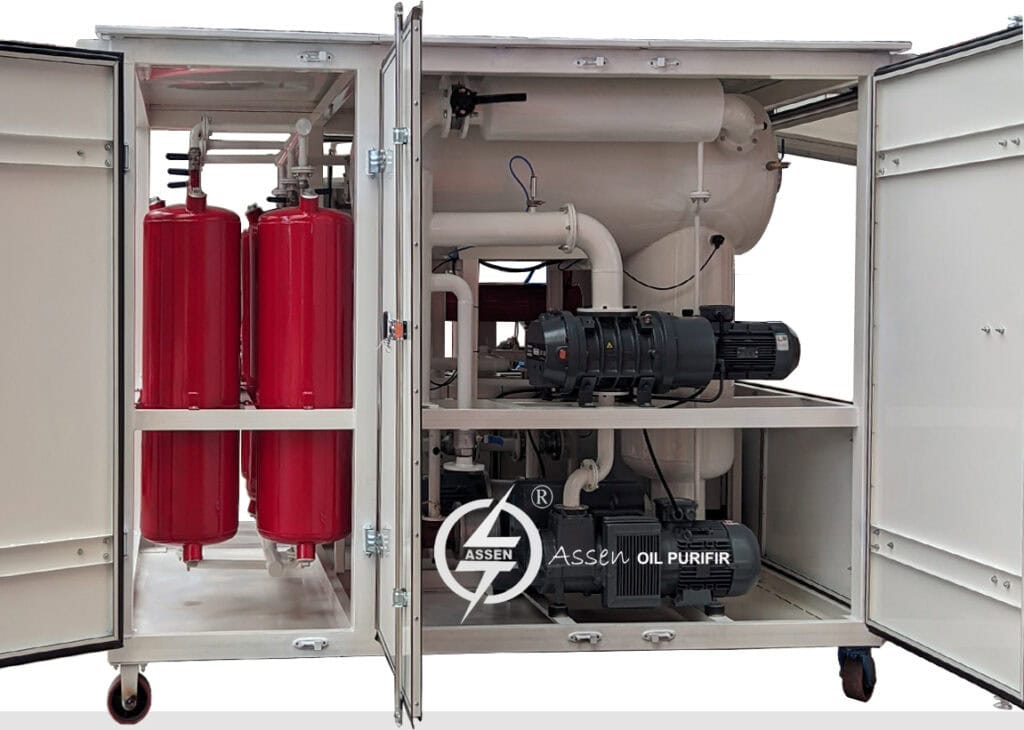Why need a transformer oil regeneration process plant?
Adsorbents are used in the transformer oil regeneration process to restore the oil’s properties and extend the life of the transformer.
Transformer oil is essential for power transformers’ optimal operation and long service life. It functions as both an insulator and a coolant, ensuring that transformers in power systems operate safely and reliably. Transformer oil degrades over time owing to exposure to heat, moisture, and impurities, resulting in poor insulating performance and the possibility of equipment failure.
Understanding Transformer Oil Degradation
Transformer oil degradation can occur due to several factors:
Oxidation: Heat and oxygen can cause the oil to oxidize, leading to the formation of acids, sludge, and varnish, which can impair its insulating properties.
Moisture: Water contamination in the oil can decrease its dielectric strength, leading to potential short circuits and reduced insulating performance.
Particulate Contaminants: Dirt, metal particles, and other contaminants can accumulate in the oil, affecting its ability to cool and insulate effectively.
Role of Adsorbents in Transformer Oil Regeneration Process
Adsorbents are materials that can remove contaminants from transformer oil by adhering them to their surfaces. The use of adsorbents in oil regeneration involves passing the degraded oil through a bed of adsorbent material, which captures impurities and restores the oil’s properties. Here’s a closer look at how adsorbents contribute to this process:
Types of Adsorbents
Activated Carbon: Activated carbon is one of the most common adsorbents used in transformer oil regeneration. It has a high surface area and is effective at adsorbing a wide range of contaminants, including acids, oxidation products, and particulate matter. Activated carbon can also help remove color and odor from the oil.
Silica Gel: Silica gel is another adsorbent used to remove moisture from transformer oil. It has a high affinity for water molecules, making it effective at reducing the water content in the oil and improving its dielectric strength.
Clay-Based Adsorbents: Certain clays, such as bentonite or montmorillonite, can be used to adsorb polar contaminants and acids from the oil. These materials are often used in combination with other adsorbents to enhance the overall regeneration process.
Transformer Oil Regeneration Process
The transformer oil regeneration process typically involves several steps:
Filtration: The oil is first filtered to remove large particulate contaminants. This step helps protect the adsorbent material from clogging and ensures efficient performance.
Adsorption: The filtered oil is then passed through a bed of adsorbent material. Depending on the type of adsorbent used, this step removes specific contaminants, such as acids, water, or particulate matter.
Desorption and Reconditioning: In some cases, adsorbent materials can be reconditioned or regenerated by removing the adsorbed contaminants. This process helps extend the life of the adsorbent and reduces overall regeneration costs.
Benefits of Adsorbent-Based Regeneration
Improved Oil Quality: Adsorbents effectively remove contaminants and restore the insulating and cooling properties of transformer oil, enhancing the performance and reliability of transformers.
Extended Transformer Life: By maintaining the quality of the oil, adsorbent-based regeneration helps extend the life of the transformer, reducing the need for costly replacements or repairs.
Cost-Effective: Regenerating transformer oil using adsorbents is generally more cost-effective than replacing the oil and transformer components. It also minimizes environmental impact by reducing waste.
Conclusion
Adsorbents play a crucial role in transformer oil regeneration, providing an effective means of restoring oil quality and ensuring the reliable operation of electrical transformers. By selecting appropriate adsorbent materials and implementing efficient regeneration processes, utility companies and industrial operators can enhance transformer performance, extend equipment life, and achieve cost savings. As technology continues to evolve, innovations in adsorbent materials and regeneration techniques will further improve the efficiency and effectiveness of transformer oil management, supporting the sustainability of power systems worldwide.
ASSEN is a professional oil purifier manufacturer, and we are devoted to resolving any of your oil filtration issues.
Email:[email protected] Whatsapp:+86-15223801122




